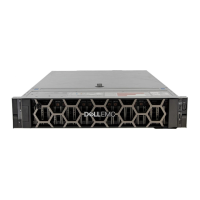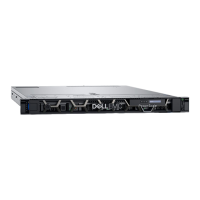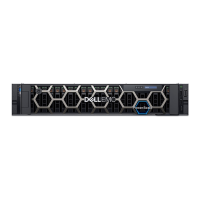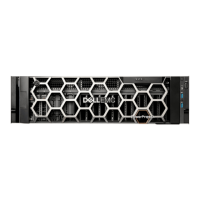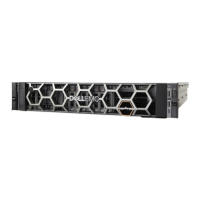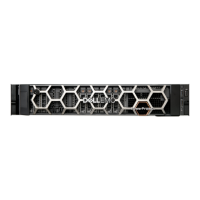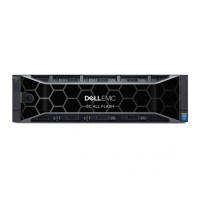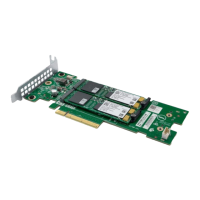Table 5. Port-specific options
IP Address For IPv4 or IPv6, the port IP address. For corresponding ports in each controller, assign one port to one
subnet and the other port to a second subnet. Ensure that each iSCSI host port in the storage system is
assigned a different IP address. For example, in a system using IPv4:
• Controller A port 2: 10.10.10.100
• Controller A port 3: 10.11.10.120
• Controller B port 2: 10.10.10.110
• Controller B port 3: 10.11.10.130
Netmask For IPv4, subnet mask for assigned port IP address.
Gateway For IPv4, gateway IP address for assigned port IP address.
Default Router For IPv6, default router for assigned port IP address.
5. In the Advanced Settings section of the panel, set the options that apply to all iSCSI ports:
• Enable Authentication (CHAP). Enables or disables use of Challenge Handshake Authentication Protocol. Enabling or disabling
CHAP in this panel updates the setting in the Configure CHAP panel (available in the Hosts topic by selecting Action > Configure
CHAP. CHAP is disabled by default.
• Link Speed.
• auto—Auto-negotiates the proper speed.
• 1 Gb/s— This setting does not apply to 10 Gb/sec HBAs.
• Enable Jumbo Frames: Enables or disables support for jumbo frames. Allowing for 100 bytes of overhead, a normal frame can
contain a 1400-byte payload whereas a jumbo frame can contain a maximum 8900-byte payload for larger data transfers.
NOTE:
Use of jumbo frames can succeed only if jumbo-frame support is enabled on all network components in the
data path.
• iSCSI IP Version: Specifies whether IP values use Internet Protocol version 4 (IPv4) or version 6 (IPv6) format. IPv4 uses 32-bit
addresses. IPv6 uses 128-bit addresses.
• Enable iSNS: Enables or disables registration with a specified Internet Storage Name Service server, which provides name-to-IP-
address mapping.
• iSNS Address: Specifies the IP address of an iSNS server.
• Alternate iSNS Address: Specifies the IP address of an alternate iSNS server, which can be on a different subnet.
CAUTION:
Changing IP settings can cause data hosts to lose access to the storage system.
6. Perform one of the following:
• To save your settings and continue configuring your system, click Apply.
• To save your settings and close the panel, click Apply and Close.
A confirmation panel is displayed.
7. Click OK to save your changes. Otherwise, click Yes.
Configuring storage setup
The Storage Setup wizard guides you through each step of creating disk groups and pools in preparation for attaching hosts and volumes.
NOTE:
You can cancel the wizard at any time, but the changes that are made in completed steps are saved.
Access the Storage Setup wizard from the Welcome panel or by choosing Action > Storage Setup. When you access the wizard, you
must select the storage type for your environment. After selecting a storage type, you are guided through the steps to create disk groups
and pools. The panels that are displayed and the options within them are dependent upon:
• Whether you select a virtual or linear storage type
• Whether the system is brand new (all disks are empty and available and no pools have been created)
• Whether the system has any pools
• Whether you are experienced with storage provisioning and want to set up your disk groups in a certain way
On-screen directions guide you through the provisioning process.
Select the storage type
When you first access the wizard, you are prompted to select the type of storage to use for your environment.
Read through the options and make your selection, and then click Next to proceed.
38
Perform system and storage setup

